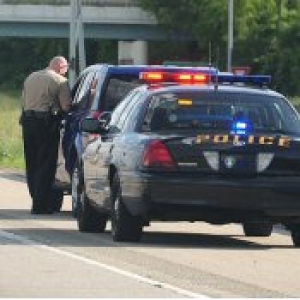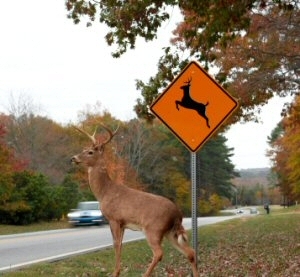 William M. Sparks 1945 - 2023
William M. Sparks 1945 - 2023
My father, William (Bill) Sparks, passed away sadly but comfortably Sunday morning, surrounded by his family. He was a kind and loving man with a heart of gold. There are so many who loved him and will feel this loss – in the business world and far beyond. He would say thank you to all of his small-business customer for their support, and he would wish everyone peace and happiness. I have run the William M. Sparks Insurance Agency for many years now, and I will continue to run it just as my father did and as he would want me to do. On behalf of my family, I thank you all for your kind words, well wishes and support at this time. --- Danielle Sparks
 It’s that time of year when we all decide the improve ourselves. We set out New Year’s resolutions, usually designed to enhance our health or our appearance. Those are admirable goals for sure. But if you’ve been there and done that, year after year, you might be ready for something fresh – something that will polish your skills and keep you safe at the same time.
It’s that time of year when we all decide the improve ourselves. We set out New Year’s resolutions, usually designed to enhance our health or our appearance. Those are admirable goals for sure. But if you’ve been there and done that, year after year, you might be ready for something fresh – something that will polish your skills and keep you safe at the same time.
We’re talking about resolutions to become a better driver. To make it a little easier for you, click on READ MORE below for some suggested resolutions to keep you safe on the road...
Drivers are distracted in many ways, including everything from dealing with children, pets and other passengers, to operating the car’s climate controls, audio or navigation device, and from eating to old-fashioned map reading. However, by far the deadliest distractions come from talking on the cell phone and texting while driving. Moreover, using your cell phone while driving has been found to impair your ability to drive your car just as much as driving while drunk.
Types of Distractions
No matter what your distractions might be, they all fall into one of the following three categories according to which of your senses are distracted by the activity, and texting and other cell phone use combine all three.
- Manual distractions – causing you to take your hands off the steering wheel
- Visual distractions – causing you to take your eyes off the road
- Cognitive distractions – causing you to take your mind off the road
According to research done by the National Highway Traffic Safety Administration (NHTSA), over half a million people were injured and over 6000 people died because of distracted or inattentive drivers in 2008.
When so many injuries and deaths occur from such a cause – and the number is increasing, then it raises our collective awareness and repercussions occur.
The Impact on Insurance and Industry
Obviously, the situation threatens a rise in auto insurance costs because insurance companies must pay increasing numbers of payouts; and this could result in increased premiums for all of us. Therefore, insurers are taking part in the movement to control distracted drivers.
This growing problem has also captured the attention of industry because of the potential for lawsuits against employers for injuries and damage caused by employees who carry out their business by cell phone while they drive.
Campaign Against Distracted Driving
As a result, a cross-section of safety and industry organizations, including the NHTSA, have joined in a campaign against distracted driving. They are encouraging states to enact laws to prohibit texting while driving and have drafted a sample state law which was unveiled by U.S. Transportation Secretary, Ray LaHood, in February, 2010.
In fact, 19 states and the District of Columbia have texting laws in place covering all drivers, and others are pending. State laws vary, and below are some examples as reported by the Governors Highway Safety Association:
- Maryland bans hand-held cell phone use and texting for all drivers. The law allows citation for hand-held cell phone use only if other violations are being cited; but Maryland drivers may be cited for texting even if no other violation has occurred. (Reflects law chnge in Maryland effective on October 1, 2010)
- District of Columbia bans use of cell phones and all handheld devices for all drivers (novice drivers with learners permit included), and citation is allowed even without other violations.
- Virginia bans cell phone use for all novice drivers under age 18 but allows citation only if other violations are being cited. Cell phone use by Virginia school bus drivers is banned and allows citing even if no other violation exists. Texting is banned for all bus drivers but allows citing only if another violation exists.
- West Virginia bans all use of cell phones including text messaging vices for novice drivers with learners and intermediate permits, and citation is allowed even without other violations.
Media Taking Action Against Distracted Driving
The public campaign to stop distracted driving – especially driving while texting and using a cell phone – is spreading, and the media is doing its part, as well. Here are just a couple of recent examples:
- You can find all the information and great resources on a new website opened by the NHTSA at www.distraction.gov .
- Among other high-profile public figures, Oprah Winfrey has made this cause a priority on her television show as well as on her website at www.oprah.com . There, you can catch videos, stories and other features that will inform and challenge you to do your part. You can take a quiz to test your knowledge about this serious topic, and you can even sign a pledge to make your vehicle a “no-phone-zone”.
What You Can Do
Whether you are a business owner, employer or just an individual concerned about your loved ones, you will want to minimize your risk by limiting your cell phone use and texting to non-driving time and by encouraging others who drive your vehicles to do the same.
No matter where you drive – from rural roads to suburban streets and even highways around our cities – the threat of a collision with a deer is real.
Deer collision accidents are on the rise, partially because the deer are being displaced from their natural habitat by urban sprawl but also because the deer population is growing.
In fact, the Insurance Information Institute reports that over 1 .6 million deer-vehicle collisions occur each year and these accidents cause vehicle damage, injuries and even fatalities at a cost in the neighborhood of $4.6 billion.
A Few Facts…
- Deer collisions are most likely to occur during deer breeding season – from October through early January.
- Prime times to find deer near the roadside are around dawn and from dusk to late evening.
- Deer are pack animals. So if you see one, be assured that others are usually close by.
Deer Season Driving Tips
- Always wear your seatbelt – Sixty percent of fatal animal crashes occurred when the driver was not wearing a seatbelt.
- Know the likely deer-crossing zones – Whether or not a road is marked with a Deer Crossing Sign, be especially alert for deer when driving on roads or highways on the outskirts of town and in rural areas – especially where roads divide farm land from wooded land. Use your high beams – When driving at night, especially during peak hazard times, use your high-beam headlights when there is no on-coming traffic. This won’t necessarily deter the deer from entering the roadway, but it will increase visibility so that you can more easily spot the deer sooner.
- Know when deer are on the move – Be especially careful between 5AM and 8AM and between 5PM and midnight.
- Don’t rely on devices – Items like deer whistles, deer fences and reflectors have not been proven effective at deterring deer crossing roadways.
- Brake firmly if you notice a deer near the road – Slow down and stop if necessary. Be careful not to swerve out of your lane either into on-coming traffic or off the shoulder and into a ditch.
- Keep your distance – If you do strike a deer, don’t approach it. An injured deer is frightened and can injure you as well as further injuring itself. If the deer is blocking the roadway, it poses a threat to other drivers; so call the authorities immediately.
- Contact your insurance agent – If you strike a deer and have damage to your vehicle or damage to some else’s property, notify your insurance representative as soon as possible and provide the necessary details.
Tag Cloud

|
|
 |





